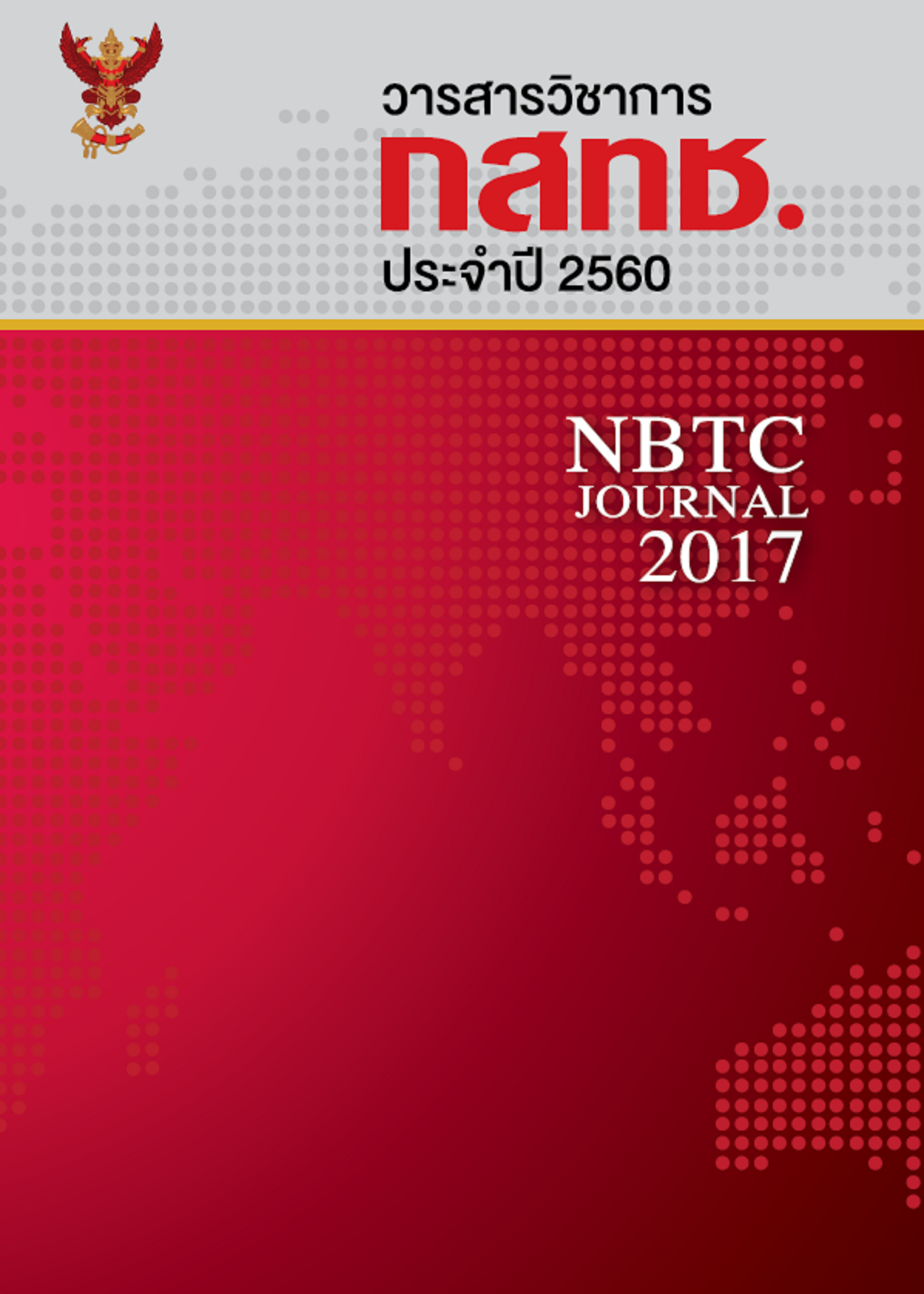Media Ombudsman: Opportunities and Challenge to Media Self-regulation
Keywords:
media ombudsman, self-regulation, media organizationAbstract
The purposes of this study intended to examine 1) the opportunity and challenge of mass media self-regulation through media ombudsman 2) international experiences of media ombudsman and 3) the factors which might support or hinder their workห. The study applied document analysis and in-depth interview. News editors and executive editors of both newspapers and broadcasting media were the key informants in this study. Theoretical frameworks were based on media self-regulation and media ombudsman concepts. The findings showed that 1) both Thai newspapers and broadcasting media had set up media ombudsman committee in their organization. While the Press Council was the key organization initiating this system of self-regulation among its members, broadcasting media on the other hand were required by NBTC regulation to establish this organ. 2) In the U.S. media ombudsmen usually were former senior editors and working alone, whereas in Japan they worked in the form of committees. In both countries, the ombudsman not merely received complaint from readers/audiences but monitored the coverage and contents of its media. 3) The factors affecting the work of self-regulation by media ombudsman included: the policy of media organization executives, internal communication among its staff, especially editorial staff, freedom of media ombudsman and their understanding of media professionalism, as well as clear guidelines, rules and directions of self-regulation under media ombudsman. The main goal will be self-regulation to enhance media credibility and accountability.
References
กสทช. (2557). คู่มือจริยธรรมและการกำกับดูแลกันเองในกิจการกระจายเสียงและกิจการโทรทัศน์ (Ethical Guideline and Self-
regulation for Broadcasting), สืบค้นเมื่อ 30 เมษายน 2560 จากhttps://www.nbtc.go.th/Services/academe/ด้านกำกับ
ดูแล/คู่มือจริยธรรมและการกำกับดูแลกันเองในกิจการกระจายเสียง
กสทช. (2558). แนวทางปฏิบัติเรื่อง การรับและพิจารณาเรื่องร้องเรียนของผู้รับใบอนุญาตประกอบกิจการโทรทัศน์ในระบบดิจิทัล
ประเภทบริการทางธุรกิจระดับชาติ, สืบค้นเมื่อ 30 พฤษภาคม 2560 จาก https://bcp.nbtc.go.th/sites
/default/files/pdf/nbtc.pdf
ข้อบังคับองค์กรกระจายเสียงและแพร่ภาพสาธารณะแห่งประเทศไทยว่าด้วยจริยธรรมของวิชาชีพเกี่ยวกับการผลิตและการเผยแพร่
รายการ พ.ศ. 2552
ข้อบังคับองค์กรกระจายเสียงและแพร่ภาพสาธารณะแห่งประเทศไทยว่าด้วยจริยธรรมของวิชาชีพเกี่ยวกับการผลิตและการเผยแพร่
รายการ (ฉบับที่ 2) พ.ศ. 2558
ชาย ปถะคามินทร์. บรรณาธิการข่าว หนังสือพิมพ์เดลินิวส์. เลขาธิการสภาการหนังสือพิมพ์แห่งชาติ. สัมภาษณ์, 24 เมษายน
เทพชัย หย่อง. บรรณาธิการบริหาร เนชั่นมัลติมีเดียกรุ๊ป. สัมภาษณ์, 11 พฤษภาคม 2560.
ปฏิวัติ วสิกชาติ. กรรมการรับเรื่องร้องเรียนภายในองค์กร สถานีโทรทัศน์ TNN 24. อดีตกรรมการสภาวิชาชีพข่าววิทยุและโทรทัศน์
ไทย. สัมภาษณ์, 5 พฤษภาคม 2560.
พรพัฒนา สิงคเสลิต. หัวหน้าฝ่ายประชาสัมพันธ์และลูกค้าสัมพันธ์ สถานีวิทยุโทรทัศน์แห่งประเทศไทย (NBT). สัมภาษณ์,
มิถุนายน 2560.
พรรษาสิริ กุหลาบ และคณะ. (2558). รายงานการวิจัยเรื่องการกำกับดูแลเนื้อหาในวิทยุและโทรทัศน์ในยุคดิจิทัล: ประสบการณ์
จากประเทศที่เปลี่ยนผ่านสู่ดิจิทัลแล้ว. ศูนย์ศึกษานโยบายสื่อ คณะนิเทศศาสตร์ จุฬาลงกรณ์มหาวิทยาลัย, สืบค้นเมื่อ 3 มีนาคม
จาก https://broadcast.nbtc.go.th/ data/academic/file/590200000002.pdf
รดี ธนารักษ์ และคณะ (2556). รายงานผลการศึกษาและข้อเสนอแนะเกี่ยวกับแนวทางและกลไกการกำกับดูแลที่เหมาะสมสำหรับ
ประเทศไทย ปี 2556. มหาวิทยาลัยราชภัฏอุตรดิตถ์, สืบค้นเมื่อ 7 มีนาคม 2560 จาก https://broadcast.nbtc.go.th/
data/academic/file/570500000002.pdf
รุ่งมณี เมฆโสภณ. ประธานคณะอนุกรรมการรับและพิจารณา เรื่องร้องเรียนจากประชาชน Thai PBS. สัมภาษณ์, 19 พฤษภาคม
เรืองชัย ทรัพย์นิรันดร์. รองประธานกรรมการบริษัทมติชนจำกัด (มหาชน). สัมภาษณ์, 19 มิถุนายน 2560.
เสริมสุข กษิติประดิษฐ์. บรรณาธิการบริหาร สถานีโทรทัศน์ NewsTV. สัมภาษณ์, 13 มิถุนายน 2560.
Altshuler, Tehila Schwartz, Laor-Droi, Nechama and Elefant-Loffler, Noa. (June 2006). “Regulation of audio-visual
content in an age of convergence: A preliminary model for regulation” อ้างถึงใน พรรษาสิริ กุหลาบ และคณะ. (2558).
รายงานการวิจัยเรื่องการกำกับดูแลเนื้อหาในวิทยุและโทรทัศน์ในยุคดิจิทัล: ประสบการณ์จากประเทศที่เปลี่ยนผ่านสู่ดิจิทัลแล้ว.
ศูนย์ศึกษานโยบายสื่อ คณะนิเทศศาสตร์ จุฬาลงกรณ์มหาวิทยาลัย, สืบค้นเมื่อ 3 มีนาคม 2560 จาก https://broadcast.nbtc.
go.th/data/academic/file/590200000002.pdf
Dvorkin, Jeffery. (2011). The modern news ombudsman: A user’s guide. Retrieved on May 31, 2017 from
https://www.newsombudsmen.org/wpcontent/themes/sink_ono/documents/ onohandbook.pdf Hilligoss,
W. (2014). The diminishing role of the ombudsman in American journalism. Master Thesis, the College of
Journalism and Mass Communication, University of Nebraska-Lincoln. Retrieved March 20, 2017 from
https://digitalcommons.unl.edu/journalismdiss/44
Kenney, Rick & Ozkan, Kerem. (2011). The ethics examiner and media councils: Improving ombudsmanship
and news councils for true citizen journalism. Journal of Mass Media Ethics. 26(1): pp.38-55 (January 2011)
LaPointe,K. (2017). About organization of news ombudsman. Retrieved on March 22, 2017 from
https://newsombudsmen.org/about-ono
Mayes, Ian. (2003). Ethics, editors and ombudsmen. The Guardian. 23 August 2003. Retrieved May 21, 2017 from
https://www.theguardian.com/comment/story/0,3604,1027925,00.html
Meyers, Christopher. (2000). Creating an effective newspaper ombudsman position. Journal of Mass Media Ethics.
(4): pp.248-256 (December 2000).
Nemeth, N (2003). News ombudsmen in North America: Assessing an experiment in social responsibility (Vol.67).
Greenwood Publishing Group.
Smith, Sydney. (April 04, 2015). “After scandals, 4 public editors hired by Asahi Shimbun, Japan’s 2nd largest
newspaper.” iMediaEthics. Retrieved on May 22, 2017 from https://www.imediaethics.org/after-scandals-4-public-
editors-hired-by-asahi-shimbun-japans-2nd-largest-newspaper/
Downloads
Published
How to Cite
Issue
Section
License
The Office of the NBTC holds the copyright of articles appearing in the journal. The Office of the NBTC allows the public or individuals to distribute, copy, or republish the work under a Creative Commons license (CC), with attribution (BY), No Derivatives (ND) and NonCommercial (NC); unless written permission is received from the Office of the NBTC.
Text, tables, and figures that appear in articles accepted for publication in this journal are personal opinion and responsibility of the author, and not binding on the NBTC and the Office of the NBTC. In case of errors, each author is solely responsible for their own article, and not concerning the NBTC and the NBTC Office in any way.



